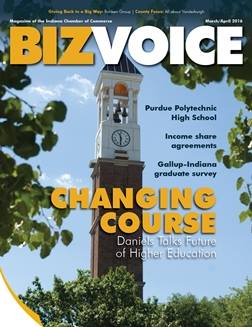 We don’t share this story because we’ve been in the magazine business for the last 18 years with Indiana’s leading statewide business publication (BizVoice). But it’s nice to see facts like these once again, courtesy of Publishing Executive, reaffirming that print is far from dead.
We don’t share this story because we’ve been in the magazine business for the last 18 years with Indiana’s leading statewide business publication (BizVoice). But it’s nice to see facts like these once again, courtesy of Publishing Executive, reaffirming that print is far from dead.
Subscribers to printed consumer magazines are wealthy, well-educated empty nesters living in single-family homes, a recent U.S. Postal Service study suggests.
Households with incomes above $100,000 receive three times as many periodicals as households earning less than $35,000, says the USPS’s recently released annual Household Diary Study.
Households that receive the most mailed periodicals also tend to have more than one adult, no children, be headed by someone with a postgraduate degree and reside in a single-family house.
Affluent young adults, perhaps the audience most coveted by advertisers, also read printed magazines. Those under 34 with household incomes over $100,000 receive 0.8 periodicals per week, more than the average household and several times more than their less affluent young-adult counterparts.

 So I guess print is not dead. In fact, it is quite alive, according to the
So I guess print is not dead. In fact, it is quite alive, according to the